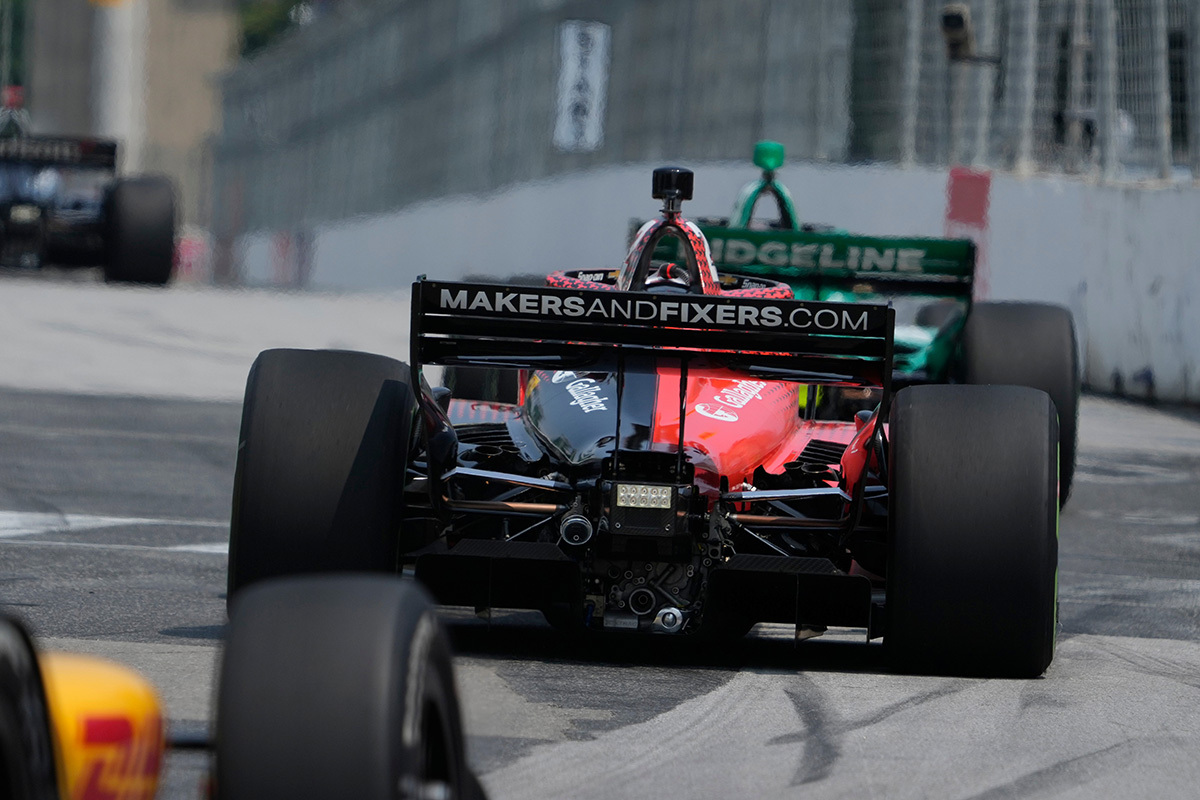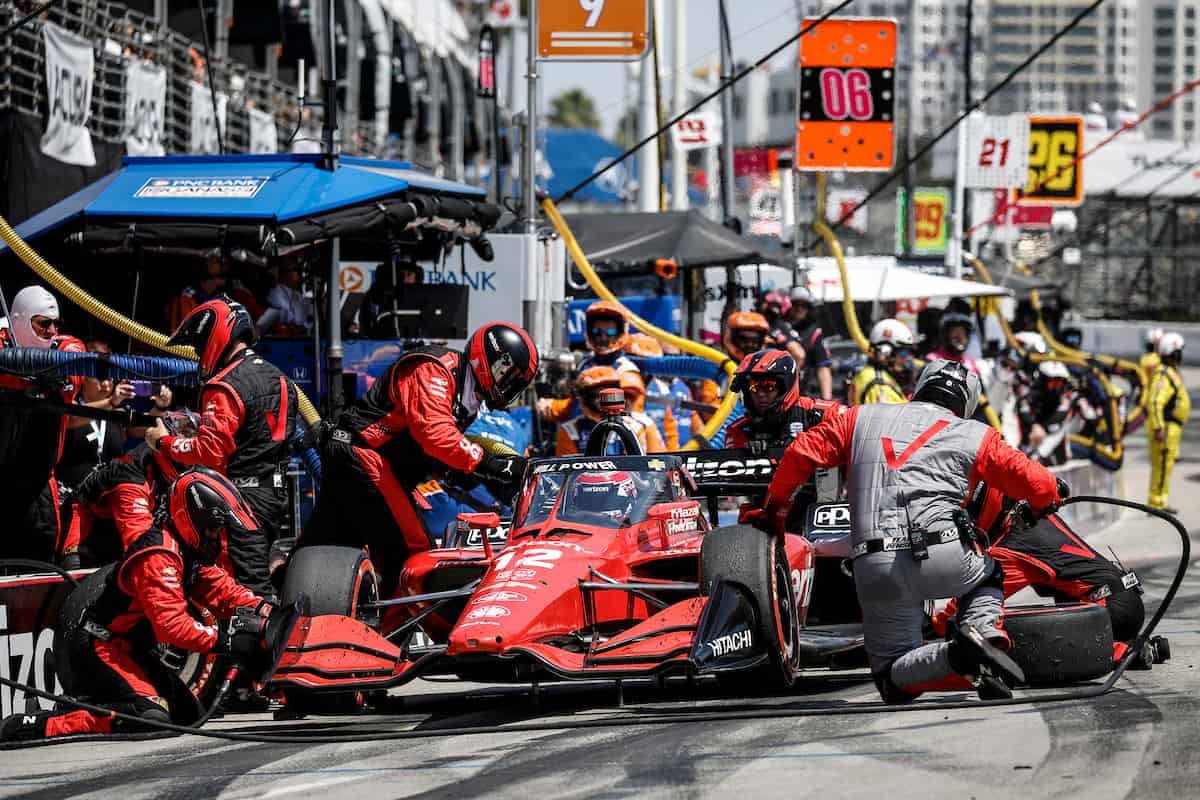Indycar Storage: Tips and Best Practices for Storing Your Race Car


What happens to IndyCar cars when they’re not racing? Where are they stored and how are they maintained?
IndyCar storage is a crucial part of the sport, as it ensures that the cars are kept in top condition and ready to race at a moment’s notice. These high-performance machines require specialized care and maintenance, which is why they are stored in state-of-the-art facilities that are equipped with everything needed to keep them in top shape. From climate control systems to specialized tools and equipment, these facilities are designed to provide the best possible care for these high-performance machines.
Table of Contents
Why Indycar Storage is Important
Indycar teams invest a significant amount of money into their cars and equipment. Proper storage is crucial to protect this investment and maximize performance on the track. There are two main reasons why Indycar storage is important: protecting investment and maximizing performance.
Protecting Investment
Indycar teams spend millions of dollars on their cars and equipment. Proper storage is essential to protect this investment. Cars and equipment must be stored in a secure and climate-controlled environment to prevent damage from humidity, temperature fluctuations, and other environmental factors. Damage to cars and equipment can be costly and can result in missed races and lost points in the championship standings.
Indycar teams also need to ensure that their cars and equipment are stored in a way that prevents theft and unauthorized access. Cars and equipment must be stored in a secure facility with restricted access to prevent theft and vandalism.
Maximizing Performance
Proper storage is also important to maximize performance on the track. Cars and equipment must be stored in a way that minimizes wear and tear and ensures that they are ready to perform at their best when they are needed. This includes storing tires and other components in a way that prevents flat spots and other damage, and ensuring that all equipment is clean and properly maintained.
Indycar teams must also ensure that their cars and equipment are stored in a way that allows for easy access and efficient preparation. Cars and equipment must be stored in a way that allows for quick and easy maintenance and repairs, and that allows for easy loading and unloading when it is time to travel to the track.
Types of IndyCar Storage
When it comes to storing an IndyCar, there are two main types of storage: on-site storage and off-site storage, and it is crucial teams understand how to prepare and maintain a stored vehicle. Each has its own benefits and drawbacks, and the choice ultimately depends on the team’s individual needs and preferences.
On-Site Storage
On-site storage refers to storing the IndyCar at the track or team’s own facility. This type of storage offers several advantages, including easy access to the car for maintenance and repairs, as well as the ability to make last-minute adjustments before a race. Additionally, on-site storage provides a sense of security, as the team has complete control over the storage environment and can monitor the car at all times.
However, on-site storage also has its drawbacks. It can be expensive to maintain a dedicated storage facility, and the team must ensure that the facility is equipped with the necessary equipment and tools to properly care for the car. Additionally, on-site storage can be limiting in terms of space, as the team may not have enough room to store multiple cars or equipment.
Off-Site Storage
Off-site storage refers to storing the IndyCar at a separate facility, such as a storage unit or warehouse. This type of storage can be more cost-effective than on-site storage, as the team does not have to maintain a dedicated storage facility. Additionally, off-site storage can provide more space for the team to store multiple cars and equipment.
However, off-site storage also has its drawbacks. The team may not have easy access to the car for maintenance and repairs, and may have to transport the car back and forth from the storage facility to the track. Additionally, off-site storage can be less secure than on-site storage, as the team does not have complete control over the storage environment.
Factors Teams Consider When Choosing IndyCar Storage
Location
When it comes to storing IndyCars, location is a crucial factor. Teams want to ensure that their vehicles are stored in a safe and easily accessible location. Ideally, the storage facility should be located near the team’s base of operations or the racetrack where the car will be used. This helps to reduce transportation costs and minimize the risk of damage during transit.
Security
IndyCar teams invest a lot of money in their vehicles, so security is of utmost importance. The storage facility should have a robust security system in place to protect the cars from theft, vandalism, and other potential risks. This may include surveillance cameras, access control systems, and on-site security personnel.
Climate Control
IndyCars are high-performance machines that require careful maintenance to stay in top condition. Temperature and humidity can have a significant impact on the performance and longevity of the vehicle’s components. Therefore, teams need to choose a storage facility that provides climate-controlled storage to maintain the optimal temperature and humidity levels.
Accessibility
When it comes to IndyCar racing, time is of the essence. Teams need to have quick and easy access to their vehicles to perform maintenance, repairs, and upgrades. Therefore, the storage facility should be easily accessible, with ample space for loading and unloading the cars. Additionally, the facility should have flexible hours of operation to accommodate the team’s busy schedule. In conclusion, choosing the right storage facility is crucial for IndyCar teams to ensure the safety, security, and optimal performance of their vehicles. Location, security, climate control, and accessibility are all key factors to consider when making this decision.
Tips for Storing Your Indycar
At the end of each season, there are many IndyCar cars for sale to the general public. There are also third-party agents who source old IndyCar cars for collectors. Storing your IndyCar correctly is arguably the most important factor to consider as you look to protect your investment.
Preparing Your Indycar for Storage
Before storing your Indycar, it is important to prepare it properly to ensure it remains in good condition. Here are some steps to follow:
- Wash and dry the car thoroughly to remove any dirt, debris, or moisture that could cause damage during storage.
- Change the oil and filter to remove any contaminants that could cause corrosion or damage to the engine during storage.
- Fill up the gas tank to prevent moisture from accumulating inside and causing rust or other damage.
- Remove the battery and store it in a dry, cool place to prevent it from losing charge or freezing.
- Apply a coat of wax or sealant to protect the paint and finish from damage during storage.
Maintenance During Storage
Even while in storage, your Indycar requires some maintenance to keep it in good condition. Here are some steps to follow:
- Check on the car regularly to ensure it is in good condition and to catch any issues early.
- Start the engine and let it run for a few minutes every few weeks to prevent the battery from losing charge and to circulate the oil.
- Keep the car covered with a breathable cover to protect it from dust, debris, and moisture.
- Store the car in a dry, cool place to prevent rust or other damage from moisture and humidity.
Preparing Your Indycar for Use
When it’s time to take your Indycar out of storage and back on the track, follow these steps to prepare it for use:
- Check the tire pressure and inflate as needed.
- Check the brakes, suspension, and steering to ensure they are in good condition and functioning properly.
- Replace the battery if needed and ensure it is fully charged.
- Change the oil and filter before taking the car out on the track.
- Perform a thorough inspection of the car to ensure it is in good condition and ready for use.
Conclusion
IndyCar storage is a crucial aspect of the sport, ensuring that teams have the necessary equipment and resources to compete at the highest level. From chassis to engines, tires to fuel, every component must be carefully stored and maintained to ensure peak performance on race day. One key factor in IndyCar storage is the use of spec cars. While this may limit the ability of teams to customize their vehicles, it also helps to level the playing field and ensure fair competition. Additionally, the use of spec cars can simplify storage and maintenance, as teams do not need to worry about accommodating unique parts or configurations. Another important consideration in IndyCar storage is safety. Chassis must be carefully inspected and maintained to ensure they are in top condition, while fuel and other hazardous materials must be stored in compliance with strict regulations. By prioritizing safety in their storage practices, teams can help to protect both their drivers and the wider racing community. Overall, IndyCar storage is a complex and multifaceted process that requires careful attention to detail and a commitment to excellence. By working closely with their storage partners and prioritizing safety and performance, teams can help to ensure success on the track and a bright future for the sport.










